Dr. Neeraj Meel
Vegetables are low in calories but rich in vitamins, minerals and other important nutrients. In addition, many are low in carbs and high in fiber, making them ideal for low-carb diets. The definition of a low-carb diet varies widely, but most are less than 150 grams of carbs per day, and some go as low as 20 grams per day. Whether or not you’re on a low-carb diet, eating more vegetables is always a great idea. Here is a list of the 21 best low-carb vegetables to include in your diet.
For find your diet chart contact us
1. Artichokes
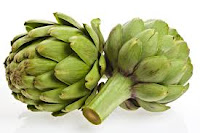 Artichokes are delicious and nutritious. The edible portion of the plant consists of the flower buds before the flowers come into bloom. The budding artichoke flower-head is a cluster of many budding small flowers (an inflorescence) together with many bracts, on an edible base. Once the buds bloom, the structure changes to a coarse, barely edible form. Another variety of the same species is the cardoon, a perennial plantnative to the Mediterranean region. Both wild forms and cultivated varieties (cultivars) exist.
Artichokes are delicious and nutritious. The edible portion of the plant consists of the flower buds before the flowers come into bloom. The budding artichoke flower-head is a cluster of many budding small flowers (an inflorescence) together with many bracts, on an edible base. Once the buds bloom, the structure changes to a coarse, barely edible form. Another variety of the same species is the cardoon, a perennial plantnative to the Mediterranean region. Both wild forms and cultivated varieties (cultivars) exist.
One medium-sized globe artichoke (120 grams)
contains 14 grams of carbs. However, 10 grams come from fiber, making it very
low in digestible (net) carbs. A portion of the fiber is inulin, which
acts as a prebiotic that feeds the healthy gut bacteria.
What’s more, artichokes may protect heart health. In one study, when people
with high cholesterol drank artichoke juice, they experienced a reduction in
inflammatory markers and improvement in blood vessel function.
Artichokes can also be made into a herbal tea. "Artichoke tea" is produced as a commercial product in the Da Lat region of Vietnam. An herbal tea based on artichoke is also produced in Romaniaand is called Ceai de Anghinare. The flower portion is put into water and consumed as a herbal tea, called alcachofa in Mexico. It has a slightly bitter woody taste.
Related Article: Amazing & Clinically Prove Benefits of Guava
Footnote: Artichokes contain 4 grams of digestible
carbs per serving and may improve gut and heart health.
2. Asparagus
 Asparagus, or garden asparagus, scientific name Asparagus officinalis, is a spring vegetable, a flowering perennial plant species in the genus Asparagus. It was once classified in the lily family, like the related Allium species, onions and garlic, but the Liliaceae have been split and the onion-like plants are now in the family Amaryllidaceae and asparagus in the Asparagaceae. Asparagus officinalis is native to most of Europe, northern Africa and western Asia, and is widely cultivated as a vegetable crop.
Asparagus, or garden asparagus, scientific name Asparagus officinalis, is a spring vegetable, a flowering perennial plant species in the genus Asparagus. It was once classified in the lily family, like the related Allium species, onions and garlic, but the Liliaceae have been split and the onion-like plants are now in the family Amaryllidaceae and asparagus in the Asparagaceae. Asparagus officinalis is native to most of Europe, northern Africa and western Asia, and is widely cultivated as a vegetable crop.
Asparagus is a delicious spring vegetable. Only young sparagus shoots are commonly eaten. One cup (180 grams) of cooked asparagus contains 8 grams of carbs, four of which are fiber. It’s also a good source of vitamins A, C and K. Test-tube studies have found that asparagus may help stop the growth of several types of cancer, and studies in mice suggest it may help protect brain health and reduce anxiety.
Footnote: Asparagus contains 4 grams of digestible carbs per
serving. It’s a good source of several vitamins and may help protect against
certain types of cancer.
3.Avocados
 The avocado (Persea americana) is a tree that is native to South Central Mexico, classified as a member of the flowering plant family Lauraceae. Avocado (also alligator pear) also refers to the tree's fruit, which is botanically a large berry containing a single seed.
The avocado (Persea americana) is a tree that is native to South Central Mexico, classified as a member of the flowering plant family Lauraceae. Avocado (also alligator pear) also refers to the tree's fruit, which is botanically a large berry containing a single seed.
Avocados are commercially valuable and are cultivated in tropical and Mediterranean climatesthroughout the world. They have a green-skinned, fleshy body that may be pear-shaped, egg-shaped, or spherical. Commercially, they ripen after harvesting. Avocado trees are partially self-pollinating and are often propagated through grafting to maintain a predictable quality and quantity of the fruit.
Avocados are a unique and delicious food. Although technically a fruit, avocados are typically consumed as vegetables. They’re also high in fat and contain very few digestible carbs.
A one-cup (150-gram) serving of chopped avocados has 13 grams of carbs, 10 of which are fiber. Avocados are also rich in oleic acid, a type of monounsaturated fat that has beneficial effects on health. Small studies have found that avocados can help lower LDL cholesterol and triglyceride levels .They’re also a good source of vitamin C, folate and potassium. Although avocados are a fairly high-calorie food, they may be beneficial for weight management. In one study, overweight people who included half an avocado at lunch reported feeling fuller and had less desire to eat over the next five hours.
Footnote: Avocados provide 3 grams of net carbs per serving. They
promote feelings of fullness and are high in heart-healthy fat and fiber.
4. Bell Peppers
Capsicum peppers are rich sources of antioxidants and vitamin C. The level of carotene, like lycopene, is nine times higher in red peppers. Red peppers have twice the vitamin C content of green peppers.Red and green bell peppers are high in para-coumaric acid.
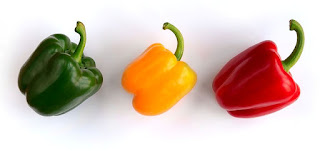 The bell pepper (also known as sweet pepper or pepper in the United Kingdom, Canada and Ireland, and capsicum in Australia, India, Pakistan, Bangladesh, Singapore and New Zealand) is a cultivar group of the species Capsicum annuum.Cultivars of the plant produce fruits in different colors, including red, yellow, orange, green, chocolate/brown, vanilla/white, and purple. Bell peppers are sometimes grouped with less pungent pepper varieties as "sweet peppers". The ribs and seeds inside bell peppers may be consumed, but some people find the taste to be bitter.
The bell pepper (also known as sweet pepper or pepper in the United Kingdom, Canada and Ireland, and capsicum in Australia, India, Pakistan, Bangladesh, Singapore and New Zealand) is a cultivar group of the species Capsicum annuum.Cultivars of the plant produce fruits in different colors, including red, yellow, orange, green, chocolate/brown, vanilla/white, and purple. Bell peppers are sometimes grouped with less pungent pepper varieties as "sweet peppers". The ribs and seeds inside bell peppers may be consumed, but some people find the taste to be bitter.
It is also known as sweet peppers or capsicums, are incredibly nutritious. They contain antioxidants called carotenoids that may reduce inflammation, decrease cancer risk and protect cholesterol and fats from oxidative damage. One cup (149 grams) of chopped red pepper contains nine grams of carbs, three of which are fiber. It provides 93% of the Reference Daily Intake (RDI) for vitamin A and a whopping 317% of the RDI for vitamin C, which is often lacking on very low-carb diets. Green, orange and yellow bell peppers have similar nutrient profiles, although red pepper is highest in certain antioxidants.
Footnote: Bell peppers are anti-inflammatory and high in
vitamins A and C. They contain 6 grams of digestible (“net”) carbs per serving.
5. Broccoli
 Broccoli is an edible green plant in the cabbage family whose large flowering head is eaten as a vegetable.The word broccoli comes from the Italian plural of broccolo, which means "the flowering crest of a cabbage", and is the diminutive form of brocco, meaning "small nail" or "sprout".Broccoli is often boiled or steamed but may be eaten raw.
Broccoli is an edible green plant in the cabbage family whose large flowering head is eaten as a vegetable.The word broccoli comes from the Italian plural of broccolo, which means "the flowering crest of a cabbage", and is the diminutive form of brocco, meaning "small nail" or "sprout".Broccoli is often boiled or steamed but may be eaten raw. Broccoli is classified in the Italica cultivar group of the species Brassica oleracea. Broccoli has large flower heads, usually green in color, arranged in a tree-like structure branching out from a thick, edible stalk. The mass of flower heads is surrounded by leaves. Broccoli resembles cauliflower, which is a different cultivar group of the same species.
Broccoli is classified in the Italica cultivar group of the species Brassica oleracea. Broccoli has large flower heads, usually green in color, arranged in a tree-like structure branching out from a thick, edible stalk. The mass of flower heads is surrounded by leaves. Broccoli resembles cauliflower, which is a different cultivar group of the same species.For find Solution for your problem contact us Broccoli is a true super food. It’s a member of the cruciferous vegetable family, which includes kale, Brussels sprouts, radishes and cabbage. Studies show broccoli may decrease insulin resistance in type 2 diabetics.
Related Article: Amazing & Clinically Prove Benefits of Guava
It’s also thought to protect against several types of cancer, including prostate cancer. One cup (91 grams) of raw broccoli contains 6 grams of carbs, two of them fiber. It also provides more than 100% of the RDI for vitamins C and K.
Footnote: Broccoli contains 4 grams of digestible carbs per
serving. It’s high in vitamins C and K, may reduce insulin resistance and help
prevent cancer.
6.Brussels Sprouts
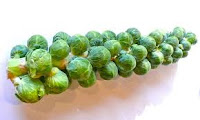 The Brussels sprout is a member of the Gemmifera Group of cabbages (Brassica oleracea), grown for its edible buds. The leafy green vegetables are typically 2.5–4 cm (0.98–1.6 in) in diameter and look like miniature cabbages. The Brussels sprout has long been popular in Brussels, Belgium, and may have originated and gained its name there.
The Brussels sprout is a member of the Gemmifera Group of cabbages (Brassica oleracea), grown for its edible buds. The leafy green vegetables are typically 2.5–4 cm (0.98–1.6 in) in diameter and look like miniature cabbages. The Brussels sprout has long been popular in Brussels, Belgium, and may have originated and gained its name there. Related Article: Amazing & Clinically Prove Benefits of Guava
 Raw Brussels sprouts contain excellent levels of vitamin C and vitamin K, with more moderate amounts of B vitamins, such as folic acid and vitamin B6 (USDA nutrient table, right); essential minerals and dietary fibre exist in lesser amounts.Brussels sprouts, as with broccoli and other brassicas, contain sulforaphane, a phytochemical under basic research for its potential anticancer properties. Although boiling reduces the level of sulforaphane, steaming and stir frying do not result in significant loss. Consuming Brussels sprouts in excess may not be suitable for patients taking anticoagulants such as warfarin since they contain vitamin K, a blood-clotting factor. In one such reported incident, eating too many Brussels sprouts may have countered blood-thinning therapy.
Raw Brussels sprouts contain excellent levels of vitamin C and vitamin K, with more moderate amounts of B vitamins, such as folic acid and vitamin B6 (USDA nutrient table, right); essential minerals and dietary fibre exist in lesser amounts.Brussels sprouts, as with broccoli and other brassicas, contain sulforaphane, a phytochemical under basic research for its potential anticancer properties. Although boiling reduces the level of sulforaphane, steaming and stir frying do not result in significant loss. Consuming Brussels sprouts in excess may not be suitable for patients taking anticoagulants such as warfarin since they contain vitamin K, a blood-clotting factor. In one such reported incident, eating too many Brussels sprouts may have countered blood-thinning therapy.
Brussels sprouts are another delicious cruciferous vegetable. A half-cup (78-gram) serving of cooked Brussels sprouts contains 6 grams of carbs, two of which are fiber. It also provides 80% of the RDI for vitamin C and 137% of the RDI for vitamin K. What’s more, controlled human studies suggest that eating Brussels sprouts may reduce risk factors for cancer, including colon cancer.
Footnote: Brussels sprouts contain 4 grams of digestible
carbs per serving. They’re high in vitamins C and K and may help reduce cancer
risk.
Cabbage or headed cabbage (comprising several cultivars of Brassica oleracea) is a leafy green or purple biennial plant, grown as an annual vegetable crop for its dense-leaved heads. It is descended from the wild cabbage, B. oleracea var. oleracea, and is closely related to broccoli and cauliflower (var. botrytis), brussels sprouts (var. gemmifera) and savoy cabbage (var. sabauda). Cabbage heads generally range from 0.5 to 4 kilograms (1 to 9 lb), and can be green, purple and white. Smooth-leafed firm-headed green cabbages are the most common, with smooth-leafed red and crinkle-leafed savoy cabbages of both colors seen more rarely. It is a multi-layered vegetable. Under conditions of long sunlit days such as are found at high northern latitudes in summer, cabbages can grow much larger. Some records are discussed at the end of the history section.
For find Solution for your problem contact us In addition to its usual purpose as an edible vegetable, cabbage has been used historically as a medicinal herb for a variety of purported health benefits. The Ancient Greeks recommended consuming the vegetable as a laxative, and used cabbage juice as an antidote for mushroom poisoning, for eye salves, and for liniments used to help bruises heal
In addition to its usual purpose as an edible vegetable, cabbage has been used historically as a medicinal herb for a variety of purported health benefits. The Ancient Greeks recommended consuming the vegetable as a laxative, and used cabbage juice as an antidote for mushroom poisoning, for eye salves, and for liniments used to help bruises heal
For find Solution for your problem contact us
 In addition to its usual purpose as an edible vegetable, cabbage has been used historically as a medicinal herb for a variety of purported health benefits. The Ancient Greeks recommended consuming the vegetable as a laxative, and used cabbage juice as an antidote for mushroom poisoning, for eye salves, and for liniments used to help bruises heal
In addition to its usual purpose as an edible vegetable, cabbage has been used historically as a medicinal herb for a variety of purported health benefits. The Ancient Greeks recommended consuming the vegetable as a laxative, and used cabbage juice as an antidote for mushroom poisoning, for eye salves, and for liniments used to help bruises heal
Cabbage has some impressive health benefits. As a cruciferous vegetable, it may help reduce the risk of certain cancers, including esophageal and stomach cancer .One cup (89 grams) of chopped raw cabbage contains 5 grams of carbs, three of which are fiber. It also provides 54% of the RDI for vitamin C and 85% of the RDI for vitamin K.
Footnote: Cabbage contains 2 grams of digestible carbs per
serving. It’s high in vitamins C and K and may reduce the risk of certain
cancers.
8. Cauliflower
Cauliflower is one of several vegetables in the species Brassica oleracea in the genus Brassica, which is in the family Brassicaceae. It is an annual plant that reproduces by seed. Typically, only the head (the white curd) is eaten. The cauliflower head is composed of a white inflorescence meristem. Cauliflower heads resemble those in broccoli, which differs in having flower buds.
Brassica oleracea also includes broccoli, brussels sprouts, cabbage, collard greens, and kale, though they are of different cultivar groups. There are four major groups of cauliflower. Italian,Northern European annuals,Northwest European biennial, & Asian. it have four color such as White,Orange,Green,Purple.
100 grams of raw white cauliflower provides 25 calories, is low in fat, carbohydrates, dietary fiber and protein. It has a high content (20% or more of the Daily Value, DV) of vitamin C and moderate levels (10-19% DV) of several B vitamins and vitamin K .
Brassica oleracea also includes broccoli, brussels sprouts, cabbage, collard greens, and kale, though they are of different cultivar groups. There are four major groups of cauliflower. Italian,Northern European annuals,Northwest European biennial, & Asian. it have four color such as White,Orange,Green,Purple.
100 grams of raw white cauliflower provides 25 calories, is low in fat, carbohydrates, dietary fiber and protein. It has a high content (20% or more of the Daily Value, DV) of vitamin C and moderate levels (10-19% DV) of several B vitamins and vitamin K .
 Cauliflower is one of the most versatile and popular low-carb
vegetables. It has a very mild taste and can be used as a substitute for
potatoes, rice and other higher-carb foods. One cup (100 grams) of raw
cauliflower contains 5 grams of carbs, three of which are fiber. It’s also high
in vitamin K and provides 77% of the RDI for vitamin C. Like other cruciferous
vegetables, it’s also associated with a reduced risk of heart disease and
cancer.
Cauliflower is one of the most versatile and popular low-carb
vegetables. It has a very mild taste and can be used as a substitute for
potatoes, rice and other higher-carb foods. One cup (100 grams) of raw
cauliflower contains 5 grams of carbs, three of which are fiber. It’s also high
in vitamin K and provides 77% of the RDI for vitamin C. Like other cruciferous
vegetables, it’s also associated with a reduced risk of heart disease and
cancer.
Footnote: Cauliflower contains 2 grams of digestible carbs per
serving. It is also high in vitamins K and C, and may help prevent heart
disease and cancer.
9.Celery
Celery (Apium graveolens), a marshland plant in the family Apiaceae, has been cultivated as a vegetable since antiquity. Celery has a long hairy stalk. Depending on location and cultivar, either its stalks, leaves, or hypocotyl are eaten and used in cooking.
Celery (Apium graveolens), a marshland plant in the family Apiaceae, has been cultivated as a vegetable since antiquity. Celery has a long hairy stalk. Depending on location and cultivar, either its stalks, leaves, or hypocotyl are eaten and used in cooking.
 Celery seed is also used as a spice; its extracts are used in medicines.The use of celery seed in pills for relieving pain was described by Aulus Cornelius Celsus around AD 30. Celery seeds contain a compound, 3-n-butylphthalide, that has been demonstrated to lower blood pressure in rats.Celery juice significantly reduced hypertension in 87.5% of patients (14 of 16) tested. Another study showed the same effect on hypertension associated with pregnancy.
Celery seed is also used as a spice; its extracts are used in medicines.The use of celery seed in pills for relieving pain was described by Aulus Cornelius Celsus around AD 30. Celery seeds contain a compound, 3-n-butylphthalide, that has been demonstrated to lower blood pressure in rats.Celery juice significantly reduced hypertension in 87.5% of patients (14 of 16) tested. Another study showed the same effect on hypertension associated with pregnancy. Celery is used in weight-loss diets, where it provides low-calorie dietary fibre bulk. Celery is often incorrectly thought to be a "negative-calorie food," the digestion of which burns more calories than the body can obtain. In fact, eating celery provides positive net calories, with digestion consuming only a small proportion of the calories taken in.
Celery is used in weight-loss diets, where it provides low-calorie dietary fibre bulk. Celery is often incorrectly thought to be a "negative-calorie food," the digestion of which burns more calories than the body can obtain. In fact, eating celery provides positive net calories, with digestion consuming only a small proportion of the calories taken in.Related Article: Amazing & Clinically Prove Benefits of Guava
Celery is extremely low in digestible carbs. A one-cup (101-gram)
serving of chopped celery contains 3 grams of carbs, 2 of which are fiber. It’s
a good source of vitamin K, providing 37% of the RDI.In addition, it
contains luteolin, an antioxidant that shows potential for both preventing
and helping to treat cancer. Seeds of celery are also useful after pregnancy.
Footnote: Celery provides 1 gram of digestible carbs per serving.
It also contains luteolin, which may have anti-cancer properties.
10. Cucumbers
Cucumber (Cucumis sativus) is a widely cultivated plant in the gourd family, Cucurbitaceae. It is a creeping vine that bears cucumiform fruits that are used as vegetables. There are three main varieties of cucumber: slicing, pickling, and seedless. Within these varieties, several cultivars have been created. In North America, the term "wild cucumber" refers to plants in the genera Echinocystis and Marah, but these are not closely related. The cucumber is originally from South Asia, but now grows on most continents. Many different types of cucumber are traded on the global market.
Cucumber (Cucumis sativus) is a widely cultivated plant in the gourd family, Cucurbitaceae. It is a creeping vine that bears cucumiform fruits that are used as vegetables. There are three main varieties of cucumber: slicing, pickling, and seedless. Within these varieties, several cultivars have been created. In North America, the term "wild cucumber" refers to plants in the genera Echinocystis and Marah, but these are not closely related. The cucumber is originally from South Asia, but now grows on most continents. Many different types of cucumber are traded on the global market.
Cucumbers are low in carbs and very refreshing. One cup (104
grams) of chopped cucumber contains 4 grams of carbs with less than 1 gram from
fiber. Although cucumbers aren’t very high in vitamins or minerals, they
contain a compound alled cucurbitacin E, which may have beneficial effects
on health. Results from test-tube and animal studies suggest it has anti-cancer
and anti-inflammatory properties and may protect brain health.
Footnote: Cucumbers contain just less than 4 grams of
digestible carbs per serving. They may help protect against cancer and support
brain health.
11. Eggplant
Eggplant (Solanum melongena), or aubergine, is a species of nightshade grown for its edible fruit. Eggplant is the common name in North America and Australia, but British English uses aubergine. It is known in South Asia, Southeast Asia and South Africa as brinjal.Other common names are melongene, garden egg or guinea squash.
The fruit is widely used in cooking. As a member of the genus Solanum, it is related to the tomatoand the potato. It was originally domesticated from the wild nightshade species, the thorn or bitter apple, S. incanum, probably with two independent domestications, one in South Asia and one in East Asia.
Eggplant (Solanum melongena), or aubergine, is a species of nightshade grown for its edible fruit. Eggplant is the common name in North America and Australia, but British English uses aubergine. It is known in South Asia, Southeast Asia and South Africa as brinjal.Other common names are melongene, garden egg or guinea squash.
The fruit is widely used in cooking. As a member of the genus Solanum, it is related to the tomatoand the potato. It was originally domesticated from the wild nightshade species, the thorn or bitter apple, S. incanum, probably with two independent domestications, one in South Asia and one in East Asia.
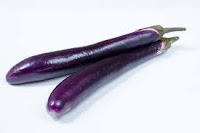 Eggplant is a common vegetable in many Italian and Asian dishes. A one-cup (99-gram) serving of chopped, cooked eggplant contains 8 grams of carbs, two of which are fiber. It’s not very high in most vitamins or minerals, but animal research suggests eggplant may help lower cholesterol and improve other markers of heart health.
Eggplant is a common vegetable in many Italian and Asian dishes. A one-cup (99-gram) serving of chopped, cooked eggplant contains 8 grams of carbs, two of which are fiber. It’s not very high in most vitamins or minerals, but animal research suggests eggplant may help lower cholesterol and improve other markers of heart health. It also contains an antioxidant known as nasunin in the purple pigment of its skin. Researchers have reported that nasunin helps reduce free radicals and may protect brain health.
Footnote: Eggplant contains 6 grams of digestible carbs per
serving and may help protect heart and brain health
12. Garlic
Allium sativum, commonly known as garlic, is a species in the onion genus, Allium. Its close relatives include the onion, shallot, leek, chive, and rakkyo. With a history of over 7,000 years of human consumption and use, garlic is native to central Asia, and has long been a staple in the Mediterranean region, as well as a frequent seasoning in Asia, Africa, and Europe. It was known to Ancient Egyptians, and has been used both as a food flavoring and as a traditional medicine.
Allium sativum, commonly known as garlic, is a species in the onion genus, Allium. Its close relatives include the onion, shallot, leek, chive, and rakkyo. With a history of over 7,000 years of human consumption and use, garlic is native to central Asia, and has long been a staple in the Mediterranean region, as well as a frequent seasoning in Asia, Africa, and Europe. It was known to Ancient Egyptians, and has been used both as a food flavoring and as a traditional medicine.
A 2014 meta-analysis of observational epidemiological studies found that garlic consumption is associated with a lower risk of stomach cancer in the Korean population.A 2014 report in the Cochrane Database of Systematic Reviews found no useful clinical trials on the common cold had been conducted with garlic, allowing no conclusions about whether an effect exists.The sticky juice within the bulb cloves is used as an adhesive in mending glass and porcelain.
Garlic is known for its beneficial effects on immune function. Studies have found that it may boost resistance to the common cold virus and decrease blood pressure. Although it’s a high-carb vegetable by weight, the amount typically consumed at a sitting is very low due to its strong taste and aroma. One clove (3 grams) of garlic contains 1 gram of carbs, part of which is fiber.
Related Article: Amazing & Clinically Prove Benefits of Guava
Footnote: Garlic contains 1 gram of digestible carbs per clove. It
may reduce blood pressure and improve immune function.
13. Green Beans
 Green beans, also known as French beans, string beans, or snap beans, are the unripe fruit and protective pods of various cultivars of the common bean (Phaseolus vulgaris). Immature pods of the runner bean (Phaseolus coccineus), yardlong bean (Vigna unguiculata subsp. sesquipedalis), and hyancinth bean (Lablab purpureus), are also used as snap beans.
Green beans, also known as French beans, string beans, or snap beans, are the unripe fruit and protective pods of various cultivars of the common bean (Phaseolus vulgaris). Immature pods of the runner bean (Phaseolus coccineus), yardlong bean (Vigna unguiculata subsp. sesquipedalis), and hyancinth bean (Lablab purpureus), are also used as snap beans. They are distinguished from the many differing varieties of beans in that green beans are harvested and consumed with their enclosing pods, typically before the seeds inside have fully matured. This practice is analogous to the harvesting of unripened pea pods as snow peas or sugar snap peas.
They are distinguished from the many differing varieties of beans in that green beans are harvested and consumed with their enclosing pods, typically before the seeds inside have fully matured. This practice is analogous to the harvesting of unripened pea pods as snow peas or sugar snap peas.In the past, bean pods often contained a "string", a hard fibrous strand running the length of the pod. This was removed before cooking, or made edible by cutting the pod into short segments. Modern, commercially grown green bean varieties lack strings.Green beans are eaten around the world, and are marketed canned, frozen, and fresh. Green beans are often steamed, boiled, stir-fried, or baked in casseroles.
For find Solution for your problem contact us
Green beans are sometimes referred to as snap beans or string
beans. They are a member of the legume family, along
with beans and lentils. However, they have significantly fewer carbs
than most legumes do.A one-cup (125-gram) serving of cooked green beans
contains 10 grams of carbs, four of which are from fiber. They’re high in the
green pigment known as chlorophyll, which animal studies suggest may help
protect against cancer. In addition, they contain carotenoids, which are
associated with improved brain function during aging.
Footnote: Green beans contain 6 grams of digestible carbs per
serving, as well as antioxidants that may help prevent cancer and protect the
brain.
Kale or leaf cabbage is a group of vegetable cultivars within the
plant species Brassica oleracea. They have green or purple leaves, in which the
central leaves do not form a head (as opposed to headed cabbages). Kales are
considered to be closer to wild cabbage than most domesticated forms of
Brassica oleracea.
In a 100 gram serving, raw kale provides 49 calories and is a rich source (20% or more of the Daily Value, DV) of vitamin A, vitamin C, vitamin K, vitamin B6, folate, and manganese (see table "Kale, raw"). Kale is a good source (10–19% DV) of thiamin, riboflavin, pantothenic acid, vitamin E and several dietary minerals, including iron, calcium, potassium, and phosphorus (see table "Kale, raw"). Boiling raw kale diminishes these nutrient contents, with the exception of vitamin K (see table "Kale, cooked, boiled, drained, without salt").
In a 100 gram serving, raw kale provides 49 calories and is a rich source (20% or more of the Daily Value, DV) of vitamin A, vitamin C, vitamin K, vitamin B6, folate, and manganese (see table "Kale, raw"). Kale is a good source (10–19% DV) of thiamin, riboflavin, pantothenic acid, vitamin E and several dietary minerals, including iron, calcium, potassium, and phosphorus (see table "Kale, raw"). Boiling raw kale diminishes these nutrient contents, with the exception of vitamin K (see table "Kale, cooked, boiled, drained, without salt").
Kale is a trendy vegetable that’s also extremely
nutritious.It’s loaded with antioxidants,
including quercetin and kaempferol.These have been shown to
lower blood pressure and may also help protect against heart disease, type 2
diabetes and other diseases.One cup (67 grams) of raw kale contains 7 grams of
carbs, one of which comes from fiber. It also provides an impressive 206% of
the RDI for vitamin A and 134% of the RDI for vitamin C.A high intake of
vitamin C has been shown to improve immune function and increase the skin’s
ability to fight damaging free radicals, which can speed up the aging process.
Footnote: Kale contains 6 grams of digestible carbs per
serving. It’s high in antioxidants and has more than 100% of the RDI for
vitamins A and C.
Lettuce (Lactuca sativa) is an annual plant of the daisy family,
Asteraceae. It is most often grown as a leaf vegetable, but sometimes for its
stem and seeds. Lettuce is most often used for salads, although it is also seen
in other kinds of food, such as soups, sandwiches and wraps; it can also be
grilled.
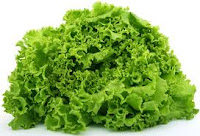 Depending on the variety, lettuce is an excellent source (20% of
the Daily Value, DV, or higher) of vitamin K (97% DV) and vitamin A (21% DV),
with higher concentrations of the provitamin A compound, beta-carotene, found
in darker green lettuces, such as Romaine.[32] With the exception of the
iceberg variety, lettuce is also a good source (10-19% DV) of folate and iron.
Depending on the variety, lettuce is an excellent source (20% of
the Daily Value, DV, or higher) of vitamin K (97% DV) and vitamin A (21% DV),
with higher concentrations of the provitamin A compound, beta-carotene, found
in darker green lettuces, such as Romaine.[32] With the exception of the
iceberg variety, lettuce is also a good source (10-19% DV) of folate and iron.
Lettuce is one of the lowest-carb vegetables around.One cup (47
grams) of lettuce contains 2 grams of carbs, one of which is fiber. Depending
on the type, it may also be a good source of certain vitamins.For instance,
romaine and other dark-green varieties are rich in vitamins A, C and K. They’re
also high in folate. Folate helps decrease levels
of homocysteine, a compound known to increase heart disease risk. In one
study of 37 women, consuming foods high in folate for five weeks reduced
homocysteine levels by 13%, compared to a low-folate diet.
Related Article: Amazing & Clinically Prove Benefits of Guava
Related Article: Amazing & Clinically Prove Benefits of Guava
Footnote: Lettuce contains 1 gram of digestible carbs per serving.
It’s high in several vitamins, including folate, which may lower heart disease
risk.
16. Mushrooms
A mushroom (or toadstool) is the fleshy, spore-bearing fruiting body of a fungus, typically produced above ground on soil or on its food source. The standard for the name "mushroom" is the cultivated white button mushroom, Agaricus bisporus; hence the word "mushroom" is most often applied to those fungi (Basidiomycota, Agaricomycetes) that have a stem (stipe), a cap (pileus), and gills (lamellae, sing. lamella) on the underside of the cap. These gills produce microscopic spores that help the fungus spread across the ground or its occupant surface.
A mushroom (or toadstool) is the fleshy, spore-bearing fruiting body of a fungus, typically produced above ground on soil or on its food source. The standard for the name "mushroom" is the cultivated white button mushroom, Agaricus bisporus; hence the word "mushroom" is most often applied to those fungi (Basidiomycota, Agaricomycetes) that have a stem (stipe), a cap (pileus), and gills (lamellae, sing. lamella) on the underside of the cap. These gills produce microscopic spores that help the fungus spread across the ground or its occupant surface.
 Identifying mushrooms requires a basic understanding of their
macroscopic structure. Most are Basidiomycetes and gilled. Their spores, called
basidiospores, are produced on the gills and fall in a fine rain of powder from
under the caps as a result. At the microscopic level the basidiospores are shot
off basidia and then fall between the gills in the dead air space. As a result,
for most mushrooms, if the cap is cut off and placed gill-side-down overnight,
a powdery impression reflecting the shape of the gills (or pores, or spines,
etc.) is formed (when the fruit body is sporulating).
Identifying mushrooms requires a basic understanding of their
macroscopic structure. Most are Basidiomycetes and gilled. Their spores, called
basidiospores, are produced on the gills and fall in a fine rain of powder from
under the caps as a result. At the microscopic level the basidiospores are shot
off basidia and then fall between the gills in the dead air space. As a result,
for most mushrooms, if the cap is cut off and placed gill-side-down overnight,
a powdery impression reflecting the shape of the gills (or pores, or spines,
etc.) is formed (when the fruit body is sporulating). Raw brown mushrooms are 92% water, 4% carbohydrates, 2% protein and less than 1% fat. In a 100 gram (3.5 ounce) amount, raw mushrooms provide 22 calories and are a rich source (20% or more of the Daily Value, DV) of B vitamins, such as riboflavin, niacin and pantothenic acid, selenium (37% DV) and copper (25% DV), and a moderate source (10-19% DV) of phosphorus, zinc and potassium (table). Vitamin C and sodium have no or minimal content. For find Solution for your problem contact us
When exposed to ultraviolet (UV) light even after harvesting,natural ergosterols in mushrooms produce vitamin D2,a process now used to
supply fresh vitamin D mushrooms for the functional food grocery market.
In a comprehensive safety assessment of producing vitamin D in
fresh mushrooms, researchers showed that artificial UV light technologies were
equally effective for vitamin D production as in mushrooms exposed to natural
sunlight, and that UV light has a long record of safe use for production of
vitamin D in food.
 Mushrooms are extremely low in carbs. A one-cup (70-gram) serving
of raw white mushrooms contains just 2 grams of carbs, 1 of which is fiber.
What’s more, they’ve been shown to have strong anti-inflammatory properties .
In a study of men with metabolic syndrome, eating 100 grams (3.5 ounces) of
white mushrooms for 16 weeks led to significant improvements in antioxidant and
anti-inflammatory markers.
Mushrooms are extremely low in carbs. A one-cup (70-gram) serving
of raw white mushrooms contains just 2 grams of carbs, 1 of which is fiber.
What’s more, they’ve been shown to have strong anti-inflammatory properties .
In a study of men with metabolic syndrome, eating 100 grams (3.5 ounces) of
white mushrooms for 16 weeks led to significant improvements in antioxidant and
anti-inflammatory markers.
Footnote: Mushrooms contain 1 gram of digestible carbs per
serving. They can reduce inflammation in people with metabolic syndrome.
17. Onions
 The onion (Allium cepa L., from Latin cepa "onion"),
also known as the bulb onion or common onion, is a vegetable and is the most
widely cultivated species of the genus Allium.Onions are cultivated and used
around the world. As a food item, they are usually served cooked, as a
vegetable or part of a prepared savoury dish, but can also be eaten raw or used
to make pickles or chutneys. They are pungent when chopped and contain certain
chemical substances which irritate the eyes.
The onion (Allium cepa L., from Latin cepa "onion"),
also known as the bulb onion or common onion, is a vegetable and is the most
widely cultivated species of the genus Allium.Onions are cultivated and used
around the world. As a food item, they are usually served cooked, as a
vegetable or part of a prepared savoury dish, but can also be eaten raw or used
to make pickles or chutneys. They are pungent when chopped and contain certain
chemical substances which irritate the eyes.
 The onion (Allium cepa L., from Latin cepa "onion"),
also known as the bulb onion or common onion, is a vegetable and is the most
widely cultivated species of the genus Allium.Onions are cultivated and used
around the world. As a food item, they are usually served cooked, as a
vegetable or part of a prepared savoury dish, but can also be eaten raw or used
to make pickles or chutneys. They are pungent when chopped and contain certain
chemical substances which irritate the eyes.
The onion (Allium cepa L., from Latin cepa "onion"),
also known as the bulb onion or common onion, is a vegetable and is the most
widely cultivated species of the genus Allium.Onions are cultivated and used
around the world. As a food item, they are usually served cooked, as a
vegetable or part of a prepared savoury dish, but can also be eaten raw or used
to make pickles or chutneys. They are pungent when chopped and contain certain
chemical substances which irritate the eyes.
Most onion cultivars are about 89% water, 4% sugar, 1% protein, 2%
fibre, and 0.1% fat. Onions contain low amounts of essential nutrients (right
table), are low in fats, and have an energy value of 166 kJ (40 kcal) per 100 g
(3.5 oz). They contribute their flavor to savory dishes without raising caloric
content appreciably.
 Onions contain phytochemical compounds such as phenolics that are
under basic research to determine their possible properties in humans. Nutrients are belows:
Onions contain phytochemical compounds such as phenolics that are
under basic research to determine their possible properties in humans. Nutrients are belows:
Onions are a tasty and nutritious vegetable. Although they
are fairly high in carbs by weight, they’re usually consumed in small amounts
because of their robust flavor. A half cup (58 grams) of sliced raw onions
contains 6 grams of carbs, one of which is fiber. Onions are high in the
antioxidant quercetin, which may lower blood pressure. One study of overweight
and obese women with polycystic ovary syndrome (PCOS) found that red onion
consumption reduced LDL cholesterol levels.
For find Solution for your problem contact us
For find Solution for your problem contact us
Footnote: Onions contain 5 grams of digestible carbs per
serving and may help lower blood pressure and LDL cholesterol levels.
18. Radishes
 The radish (Raphanus raphanistrum subsp. sativus) is an edible
root vegetable of the Brassicaceae family that was domesticated in Europe in
pre-Roman times. Radishes are grown and consumed throughout the world, being
mostly eaten raw as a crunchy salad vegetable. They have numerous varieties,
varying in size, flavor, color, and length of time they take to mature.
Radishes owe their sharp flavor to the various chemical compounds produced by
the plants, including glucosinolate, myrosinase, and isothiocyanate. They are
sometimes grown as companion plants and suffer from few pests and
diseases.
The radish (Raphanus raphanistrum subsp. sativus) is an edible
root vegetable of the Brassicaceae family that was domesticated in Europe in
pre-Roman times. Radishes are grown and consumed throughout the world, being
mostly eaten raw as a crunchy salad vegetable. They have numerous varieties,
varying in size, flavor, color, and length of time they take to mature.
Radishes owe their sharp flavor to the various chemical compounds produced by
the plants, including glucosinolate, myrosinase, and isothiocyanate. They are
sometimes grown as companion plants and suffer from few pests and
diseases.
 The radish (Raphanus raphanistrum subsp. sativus) is an edible
root vegetable of the Brassicaceae family that was domesticated in Europe in
pre-Roman times. Radishes are grown and consumed throughout the world, being
mostly eaten raw as a crunchy salad vegetable. They have numerous varieties,
varying in size, flavor, color, and length of time they take to mature.
Radishes owe their sharp flavor to the various chemical compounds produced by
the plants, including glucosinolate, myrosinase, and isothiocyanate. They are
sometimes grown as companion plants and suffer from few pests and
diseases.
The radish (Raphanus raphanistrum subsp. sativus) is an edible
root vegetable of the Brassicaceae family that was domesticated in Europe in
pre-Roman times. Radishes are grown and consumed throughout the world, being
mostly eaten raw as a crunchy salad vegetable. They have numerous varieties,
varying in size, flavor, color, and length of time they take to mature.
Radishes owe their sharp flavor to the various chemical compounds produced by
the plants, including glucosinolate, myrosinase, and isothiocyanate. They are
sometimes grown as companion plants and suffer from few pests and
diseases.
In a 100 gram serving, raw radishes provide 16 calories and have a
moderate amount of vitamin C (18% of Daily Value), with other essential
nutrients in low content.
Radishes are low-carb vegetables with a sharp, peppery taste. One
cup (116 grams) of raw sliced radishes contains 4 grams of carbs, two of which
are fiber. They’re fairly high in vitamin C, providing 29% of the RDI per
serving. Radishes are one of the Brassica vegetables, which
have been shown to reduce the risk of breast cancer in postmenopausal women by
modifying the way the body metabolizes estrogen.
Footnote: Radishes contain 2 grams of digestible carbs per
serving and may help reduce the risk of breast cancer in older women.
19. Spinach
Spinach (Spinacia oleracea) is an edible flowering plant in the family Amaranthaceae native to central and western Asia. Its leaves are eaten as a vegetable.
It is an annual plant (rarely biennial) growing to 30 cm (12 in) tall. Spinach may survive over winter in temperate regions. The leaves are alternate, simple, ovate to triangular, and very variable in size from about 2–30 cm (1–12 in) long and 1–15 cm (0.4–5.9 in) broad, with larger leaves at the base of the plant and small leaves higher on the flowering stem. The flowers are inconspicuous, yellow-green, 3–4 mm (0.1–0.2 in) in diameter, maturing into a small, hard, dry, lumpy fruit cluster 5–10 mm (0.2–0.4 in) across containing several seeds.
 In a 100 g (3.5 oz) serving providing only 23 calories, spinach
has a high nutritional value, especially when fresh, frozen, steamed, or
quickly boiled. It is a rich source (20% or more of the Daily Value, DV) of
vitamin A, vitamin C, vitamin K, magnesium, manganese, iron and folate (table).
Spinach is a good source (10-19% of DV) of the B vitamins riboflavin and
vitamin B6, vitamin E, calcium, potassium, and dietary fiber.
In a 100 g (3.5 oz) serving providing only 23 calories, spinach
has a high nutritional value, especially when fresh, frozen, steamed, or
quickly boiled. It is a rich source (20% or more of the Daily Value, DV) of
vitamin A, vitamin C, vitamin K, magnesium, manganese, iron and folate (table).
Spinach is a good source (10-19% of DV) of the B vitamins riboflavin and
vitamin B6, vitamin E, calcium, potassium, and dietary fiber.Spinach is a leafy green vegetable that provides major health benefits. Researchers report that it can help prevent damage to DNA. It also protects heart health and may decrease the risk of common eye diseases like cataracts and macular degeneration .
What’s more, it’s an excellent source of several vitamins and minerals. One cup (180 grams) of cooked spinach provides more than 10 times the RDI for. Spinach is also low in carbs, but the carbs become more concentrated as the leaves are cooked down and lose their volume. For example, one cup of cooked spinach contains 7 grams of carbs with 4 grams of fiber, whereas one cup of raw spinach contains 1 gram of carbs with almost 1 gram of fiber.
Footnote: Cooked spinach contains 3 grams of digestible carbs per
serving, is very high in vitamin K and helps protect heart and eye health.
20. Tomatoes
The tomato (see pronunciation) is the edible, red fruit of Solanum lycopersicum, commonly known as a tomato plant, which belongs to the nightshade family, Solanaceae.
The tomato (see pronunciation) is the edible, red fruit of Solanum lycopersicum, commonly known as a tomato plant, which belongs to the nightshade family, Solanaceae.
 The species originated in Central and South America. The Nahuatl
(Aztec language) word tomatl gave rise to the Spanish word "tomate",
from which the English word tomato originates.
The species originated in Central and South America. The Nahuatl
(Aztec language) word tomatl gave rise to the Spanish word "tomate",
from which the English word tomato originates.
A tomato is 95% water, contains 4% carbohydrates and less than 1%
each of fat and protein (table). In a 100 gram amount, raw tomatoes supply 18
calories and are a moderate source of vitamin C (17% of the Daily Value), but
otherwise are absent of significant nutrient content.
In a scientific review of potential claims for lycopene
favorably affecting DNA, skin exposed to ultraviolet radiation, heart function
and vision, the European Food Safety Authority concluded there was insufficient
evidence for lycopene having any of these effects
Tomatoes have a number of impressive health benefits. Like avocados, they are technically fruits but usually consumed as vegetables. They’re also low in digestible carbs. One cup (149 grams) of cherry tomatoes contains 6 grams of carbs, two of which are fiber. Tomatoes are a good source of vitamins A, C and K. In addition, they’re high in potassium, which can help reduce blood pressure and decrease stroke risk. They’ve also been shown to strengthen the endothelial cells that line your arteries, and their high lycopene content may help prevent prostate cancer. Cooking tomatoes increases lycopene content and adding fats such as olive oil during cooking has been shown to boost its absorption.
Tomatoes have a number of impressive health benefits. Like avocados, they are technically fruits but usually consumed as vegetables. They’re also low in digestible carbs. One cup (149 grams) of cherry tomatoes contains 6 grams of carbs, two of which are fiber. Tomatoes are a good source of vitamins A, C and K. In addition, they’re high in potassium, which can help reduce blood pressure and decrease stroke risk. They’ve also been shown to strengthen the endothelial cells that line your arteries, and their high lycopene content may help prevent prostate cancer. Cooking tomatoes increases lycopene content and adding fats such as olive oil during cooking has been shown to boost its absorption.
Footnote: Tomatoes contain 4 grams of digestible carbs per serving
and are high in vitamins and potassium. They may help protect heart health and
reduce cancer risk.
21. Zucchini
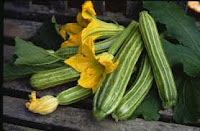 Zucchini or courgette is
a summer squash which can reach nearly a meter in length, but is usually
harvested immature at 15–25 cm. In the British Isles, a fully grown zucchini is
referred to as a marrow.
Zucchini or courgette is
a summer squash which can reach nearly a meter in length, but is usually
harvested immature at 15–25 cm. In the British Isles, a fully grown zucchini is
referred to as a marrow.
Along with certain other
squashes and pumpkins, it belongs to the species Cucurbita pepo. Zucchini can
be dark or light green. A related hybrid, the golden zucchini, is a deep yellow
or orange color.
Zucchini are low in calories (approximately 17 food calories per 100 g fresh zucchini) and contains useful amounts of folate (24 μg/100 g), potassium (261 mg/100 g) and provitamin A (200 IU [10 RAE]/100 g).
Zucchini are low in calories (approximately 17 food calories per 100 g fresh zucchini) and contains useful amounts of folate (24 μg/100 g), potassium (261 mg/100 g) and provitamin A (200 IU [10 RAE]/100 g).
Zucchini is a popular
vegetable and the most common type of summer squash. Summer squash has a long
shape and soft skin that can be eaten. In contrast, winter squash comes in a
variety of shapes, has an inedible rind and is higher in carbs than summer
varieties. One cup (124 grams) of raw zucchini contains 4 grams of carbs, one
of them fiber. It’s a good source of vitamin C, providing 35% of the RDI per
serving. Yellow Italian squash and other types of summer squash have carb
counts and nutrient profiles similar to zucchini.
Footnote: Zucchini and other types of summer squash contain 3
grams of digestible carbs per serving and are high in vitamin C.
Related Article: Amazing & Clinically Prove Benefits of Guava
Major Findings:
There are many tasty vegetables that can be included on a low-carb
diet. In addition to being low in carbs and calories, they may also reduce
disease risk and improve your overall health and well-being.
This article has only an
informative purpose and is not intended to replace a professional guidance. The
use of vitamins and supplements can offer you great results, but before using
any product, we strongly recommend that you visit a Nutritionist, Doctor, or
another specialist for an analysis and follow-up or contact us with your concern.
Source & References
:
Images- Google Search
1.http://www.graciebarra.com/aus/2014/10/your-health/
2.https://en.wikipedia.org
3. Rottenberg, A., and
D. Zohary, 1996: "The wild ancestry of the cultivated artichoke."
Genet. Res. Crop Evol. 43, 53—58.
4. Cesar G. Fraga. Plant
Phenolics and Human Health– Biochemistry, Nutrition and Pharmacology. Wiley.
p.9
5. Ceccarelli N., Curadi
M., Picciarelli P., Martelloni L., Sbrana C., Giovannetti M. "Globe
artichoke as a functional food" Mediterranean Journal of Nutrition and
Metabolism 2010 3:3 (197-201)
6. USDA Nutrient Database:
https://ndb.nal.usda.gov
7. "Fossil
avocado leaves found in California". Retrieved 2014-08-25.
8. "Brassica oleracea
L. – Cabbage". United States Department of Agriculture. Retrieved
2012-08-10.
9. a b Gibson, Arthur C.
"Colewart and the Cole Crops". University of California – Los
Angeles. Retrieved 2012-08-10.
10. Small, Ernst
(2009). Top 100 Food Plants. NRC Research Press. p. 127. ISBN
978-0-660-19858-3.
11. Sui, H.X.; Yu, Q.;
Zhi, Y.; Geng, G.; Xu, H.B. (2011). "Effects of apigenin on the expression
of anglotensin-converting enzyme 2 in kidney in spontaneously hypertensive
rats.". Journal of Hygene Research. 39 (6): 693–696.
12. Somanadhan,
B.; et al. (May 1999). "An ethnopharmacological survey for potential
angiotensin converting enzyme inhibitors from Indian medicinal plants.".
Journal of Ethnopharmacology. 65 (2): 103–112.
doi:10.1016/s0378-8741(98)00201-3. PMID 10465650
14. Simpson, D. (1998).
"Buchu—South Africa's amazing herbal remedy". Scottish Medical
Journal. 43 (43): 189–191. PMID 9924759.
15. Nestle, M.; Nesheim,
M.C. (2012). Why Calories Count: From Science to Politics. University of
California Press. p. 189. ISBN 9780520262881. Retrieved 2014-10-05.
16.Block, E. (2010).
Garlic and Other Alliums: The Lore and the Science. Royal Society of Chemistry.
ISBN 0-85404-190-7.
17. "AllergyNet
— Allergy Advisor Find". Allallergy.net. Retrieved April 14, 2010.
18.Ensminger, AH (1994).
Foods & nutrition encyclopedia, Volume 1. CRC Press, 1994. ISBN
0-8493-8980-1. p. 750
19.Simonetti, G. (1990).
Schuler, S., ed. Simon & Schuster's Guide to Herbs and Spices. Simon &
Schuster, Inc. ISBN 0-671-73489-X.
20.Ried K, Toben C,
Fakler P (May 2013). "Effect of garlic on serum lipids: an updated
meta-analysis". Nutrition Reviews. 71 (5): 282–99. doi:10.1111/nure.12012.
PMID 23590705
21.Woo HD, Park S, Oh K,
Kim HJ, Shin HR, Moon HK, Kim J (2014). "Diet and cancer risk in the Korean
population: a meta- analysis" (PDF). Asian Pacific Journal of Cancer
Prevention. 15 (19): 8509–19. doi:10.7314/apjcp.2014.15.19.8509. PMID 25339056.
22.Lissiman, E.;
Bhasale, A.L.; Cohen, M. (November 2014). "Garlic for the common
cold". Cochrane Database of Systematic Reviews. 11 (11): CD006206.
23. "Another
reason not to eat sprouts: Overdose lands Scotsman in hospital". Daily
Mail. London. 21 December 2012. Retrieved 21 December 2012.
24.Abernethy Elementary
chef taking her lessons to White House". The Oregonian. 2010-06-01.
25."Beans -
Vegetable Directory - Watch Your Garden Grow - University of Illinois
Extension".
26. "Growing beans
in Minnesota home gardens". University of Minnesota Agricultural
Extension. Retrieved 20 September 2016.
27. "Lactuca
serriola L". United States Department of Agriculture. Retrieved 2 April
2012.
28. Hugh
Fearnley-Whittingstall. "Grilled lettuce with goats' cheese". BBC.
Retrieved 17 May 2013.
29. "Lettuce".
University of Illinois Extension. Retrieved 25 March 2012.
30. Tomar, BS. VK
Science – Biology. FK Publications. p. 149. ISBN 978-81-88597-06-2.
31. "Kale".
Online Etymology Dictionary, Douglas Harper. 2016. Retrieved 16 August 2016.
32. "World War Two
vegetable comes back as 'superfood'". Daily Mail. London. 3 October 2007.
33.Nugrahedi, P. Y.;
Verkerk, R; Widianarko, B; Dekker, M (2015). "A mechanistic perspective on
process-induced changes in glucosinolate content in Brassica vegetables: A
review". Critical Reviews in Food Science and Nutrition. 55 (6): 823–38. doi:10.1080/10408398.2012.688076.
PMID 24915330.
34. Dickinson C, Lucas J
(1982). VNR Color Dictionary of Mushrooms. Van Nostrand Reinhold. pp. 9–11.
ISBN 978-0-442-21998-7.
35. Dickinson C, Lucas J
(1982). VNR Color Dictionary of Mushrooms. Van Nostrand Reinhold. pp. 9–11.
ISBN 978-0-442-21998-7.
36. Borchers, A. T.;
Krishnamurthy, A; Keen, C. L.; Meyers, F. J.; Gershwin, M. E. (2008). "The
immunobiology of mushrooms". Experimental Biology and Medicine. 233 (3):
259–76. doi:10.3181/0708-MR-227. PMID 18296732.
37. Ammirati JF,
Traquair JA, Horgen PA (1985). Poisonous Mushrooms of Canada: Including other
Inedible Fungi. Markham, Ontario: Fitzhenry & Whiteside in cooperation with
Agriculture Canada and the Canadian Government Publishing Centre, Supply and Services
Canada. ISBN 0-88902-977-6.
38. Hall IR, Stephenson
SL, Buchanan PK, Yun W, Cole AL (2003). Edible and Poisonous Mushrooms of the
World. Portland, Oregon: Timber Press. ISBN 0-88192-586-1.
39. Stuntz DE, Largent
DL, Thiers HD, Johnson DJ, Watling R (1978). How to Identify Mushrooms to Genus
I. Eureka, California: Mad River Press. ISBN 0-916422-00-3.
40."Allium cepa in
Flora of North America – v 26". efloras.org. p. 244.
41.Germplasm Resources
Information Network – (GRIN). "Allium cepa information from
NPGS/GRIN". USDA, ARS, National Genetic Resources Program. Retrieved 22
April 2011.
42. Linnaeus,
Carolus (1753). Species Plantarum (in Latin). 1. Stockholm: Laurentii Salvii.
p. 262.
43.Fitzgerald, J. J.;
Black, W. J. M. (1984). "Finishing Store Lambs on Green Forage Crops: 1. A
Comparison of Rape, Kale and Fodder Radish as Sources of Feed for Finishing
Store Lambs in Autumn". Irish Journal of Agricultural Research. 23 (2/3):
127–136. JSTOR 25556085.
44. Zohary, Daniel;
Hopf, Maria (2000). Domestication of plants in the Old World (3rd ed.). Oxford:
Oxford University Press. p. 139.
45."Georgia looking
at radish oil for biofuel market". Southeast Farm Press. 2009-06-04.
Retrieved 2014-07-30.
46. Cavigelli,
Michel A.; Martin, Todd E.; Mutch, Dale R. "Oilseed radish". Michigan
State University. Retrieved 2014-10-01.
47. Gruver, Joel; Weil,
Ray R.; White, Charles; Lawley, Yvonne (2014-03-11). "Radishes: A New
Cover Crop for Organic Farming Systems". Michigan State University.
Retrieved 2014-10-01.
48. "spinach".
Oxford English Dictionary (3rd ed.). Oxford University Press. September 2005.
49. "ToxGuide for
cadmium" (PDF). Atlanta, GA: Agency for Toxic Substances and Disease
Registry, US Department of Health and Human Services. October 2012.
50. Gabbatt, Adam (8
December 2009). "E.C. Segar, Popeye's creator, celebrated with a Google
doodle". guardian.co.uk. Retrieved 5 May 2010.
51. http://nutritiondata.self.com/facts/vegetables-and-vegetable-products/2639/2#ixzz4T5RAjqpo
52.Michael VanderBrug, The
Timber Press Guide to Vegetable Gardening in the Midwest"
53 "Summer
Squash". University of Illinois Extension. Retrieved September 15, 2013.
54.Dr. D.G. Hessayon
(2009). The Vegetable and Herb Expert. London: Expert Books.
55.USDA Agricultural
Research Service National Nutrient Database Basic Report: 11477, Squash,
summer, zucchini, includes skin, raw
Any Error? Report to Us
Contents May Subject to copyright
Disclaimer: We cannot guarantee the information is 100% accurate.



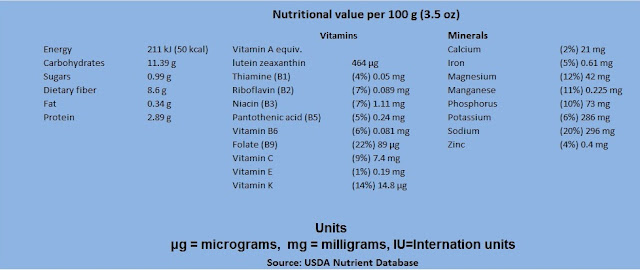
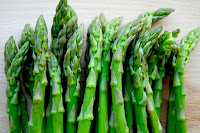
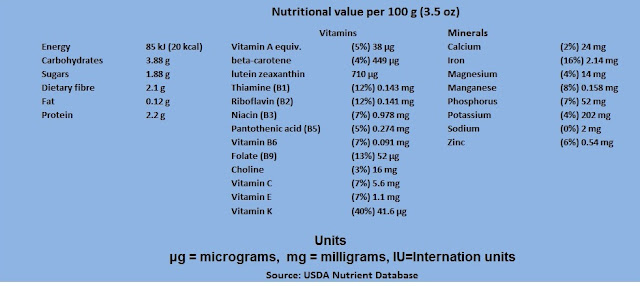
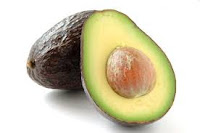
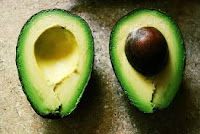
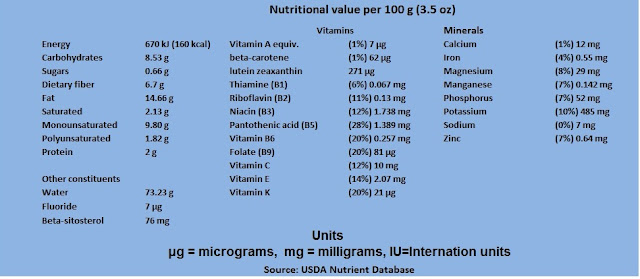

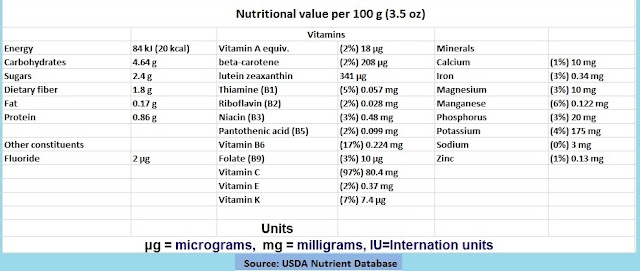
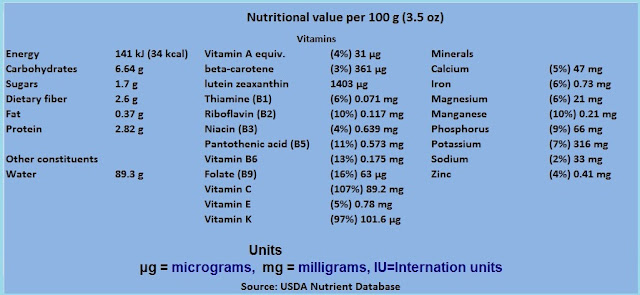
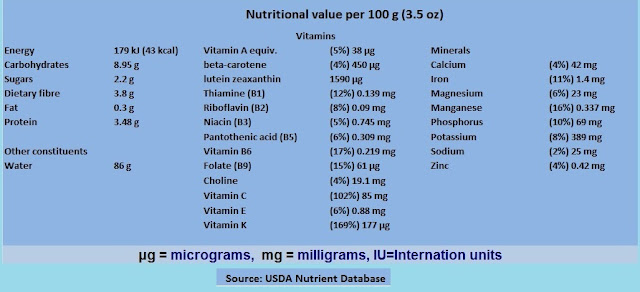

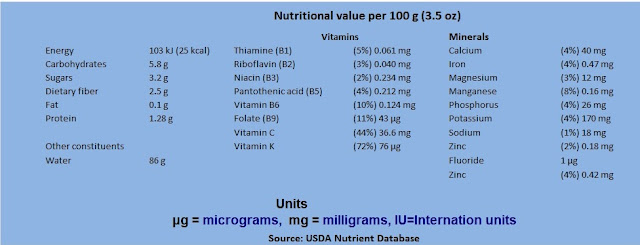




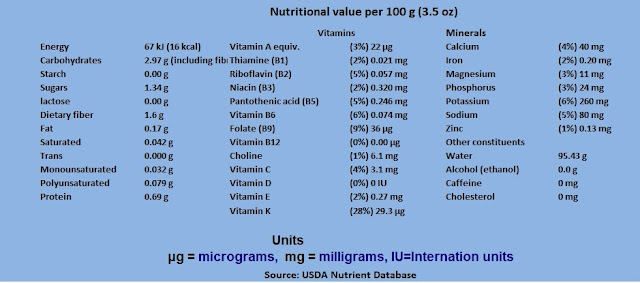
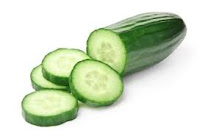
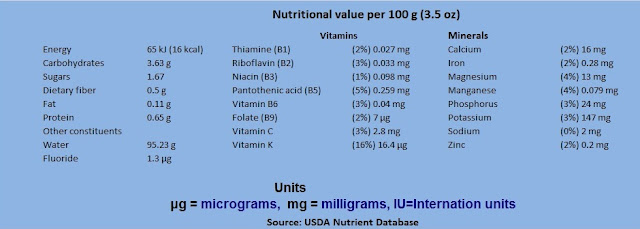

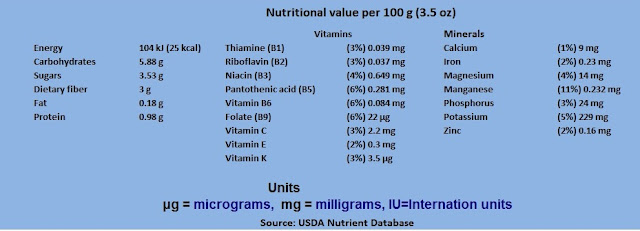


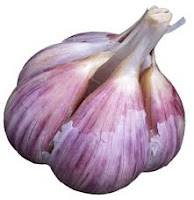


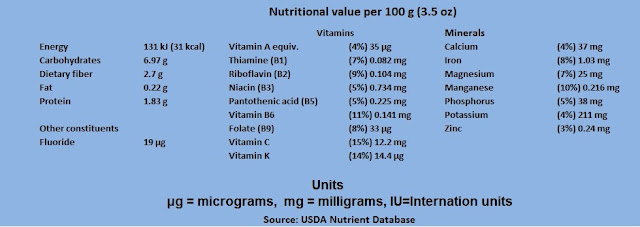
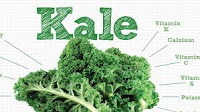
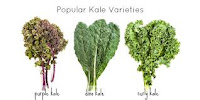

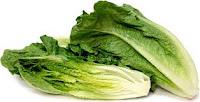
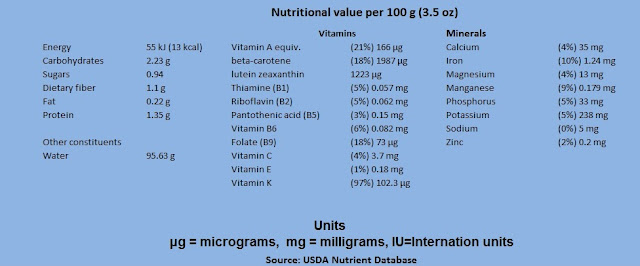

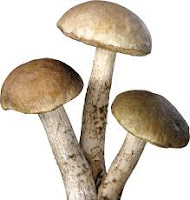


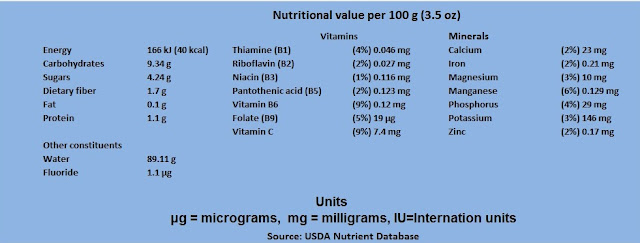



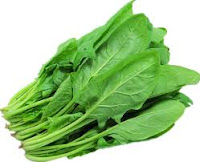


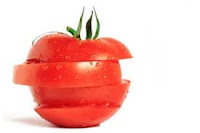


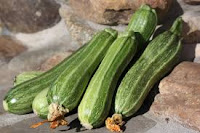
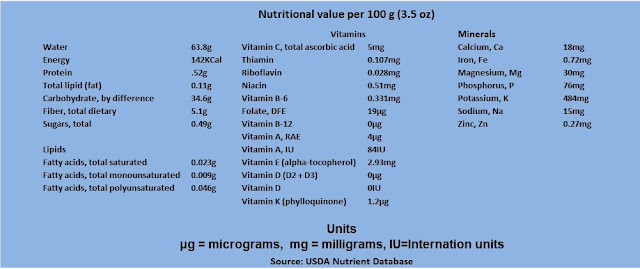
No comments:
Post a Comment